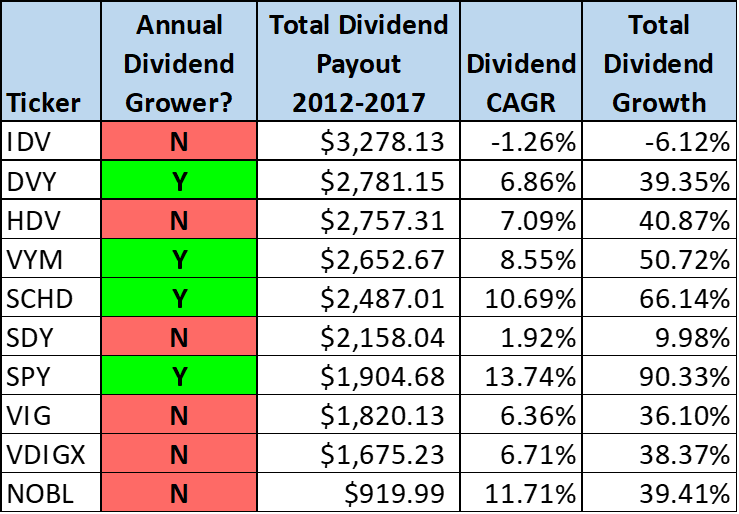[ad_1]
“The only time you should eat diet food is when you’re waiting for your steak to cook.”
—Julia Childs (referenced in “When Life Gives You Lemons…,”
Irish Times, 1/28/2016)
I recently sat down with a fellow ETF strategist, and he asked me about our current outlook for the corporate credit environment. Not too long ago, I was calling for caution in this segment.
I mentioned to him that investment-grade valuations look more attractive (Figure 1) following the corporate credit sell-off over the past few months, but that risk is now beginning to shift from lenders to stockholders.
Figure 1: Credit Spreads Rated BBB Have Blown Out Over Growing Concerns Corporate America Is Too Leveraged

Source: Bloomberg
In a nutshell, corporate America is going on a balance sheet “diet” after having binged on share repurchases, dividend payouts and mergers/acquisitions.
If corporate finance officers stick to their New Year’s resolution of a more disciplined capital diet, with the help of their personal trainers—the rating agencies—this course correction in capital allocation should favor credit holders over equity shareholders.
Investor Concerns Over Fallen Angel Risk
Investment-grade credit has been caught in the risk-off dragnet that has brought down risky assets worldwide over the second half of this year. Some of the catalysts that have contributed to souring investor sentiment within investment-grade credit include the:
- downgrade of Anheuser-Busch InBev to BBB from A
- downgrade of AT&T to lower-investment-grade following its acquisition of Time-Warner
- ongoing troubles at General Electric (formerly rated AAA) that have resulted in GE being shut out of the commercial paper market.
The Bloomberg Intelligence (BI) Report highlights a major concern among fixed-income credit investors of fallen angel risk, or the risk of investment-grade borrowers downgraded to below-investment-grade (junk-rated).
Fallen angel risk is no longer idiosyncratic to a specific issuer, as a wave of fallen angels (issuers rated BBB account for half of the $5 trillion investment-grade corporate index) could lead to major structural issues resulting in “reduced market liquidity and changed investor composition.”
And the situation gets worse if the world enters a recession. Bloomberg estimates that “a profit correction where EBITDA declines more than 15% would leave [BBBs] with leverage distribution looking more like [BBs]. Today’s elevated high-grade leverage profile so late in the economic cycle will likely [lead to] ratings casualties if the correction comes.”
The good news is that corporate borrowers still have some time to strengthen their balance sheets while they remain profitable, assuming the global economy doesn’t fall into recession. According to the BI Report, 90% of issuers rated BBB are reporting positive operating cash flow, with 50-75% of that cash flow spent on shareholder returns.
So, corporate borrowers still have discretion to change their capital binge-worthy activities and go on a leafy-green diet encompassing debt reduction while being more disciplined in funding current operations and future growth.
Fed: Bad News Becoming Not-So-Bad News
This past summer, we identified Fed overshooting as the biggest risk facing corporate lenders (i.e. investment-grade debt investors). Indeed, “Fed overshooting” reached “peak risk following comments made by Jerome Powell in early October that the Fed was ‘a long way from neutral at this point.’”
Since then, pressured by market volatility and macroeconomic data pointing to slowing economic growth and inflation, the Fed has scaled back its hawkish rate hike forecasts. Fed Funds Futures now expect only one rate hike in 2019 (which would take the Fed Funds Rate to 2.25-2.50%), whereas one month ago, futures were pricing in at least two more rate hikes (Figure 2).
Figure 2: Fed Funds Futures Imply Slower Pace Of Rate Hikes In 2019

Source: Bloomberg (as of 12/13/2018)
Now, some investors are forecasting no Fed rate hikes in 2019; however, the Fed most likely wants to maintain flexibility on setting interest rates rather than be backed into a corner by market volatility.
We would not be surprised if, following the December 2018 meeting, the Fed’s forward guidance leaves it room to raise rates further in 2019; in other words, keeping one or two more rate hikes in the freezer should the data and macro environment warrant them.
[ad_2]
Source link Google News

